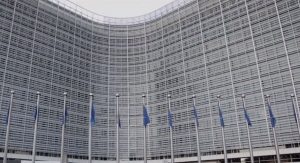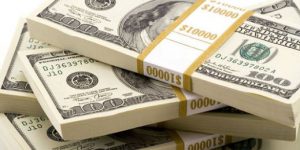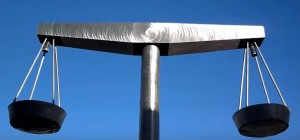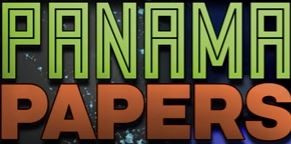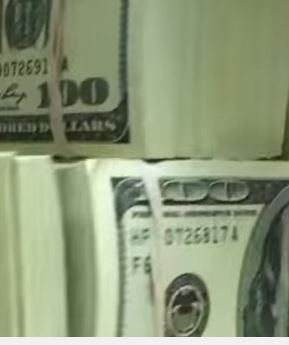
(Süddeutsche Zeitung / Germany) — “About The Panama Papers” By Frederik Obermaier, Bastian Obermayer, Vanessa Wormer and Wolfgang Jaschensky.
Over a year ago, an anonymous source contacted the Süddeutsche Zeitung (SZ) and submitted encrypted internal documents from Mossack Fonseca, a Panamanian law firm that sells anonymous offshore companies around the world. These shell companies enable their owners to cover up their business dealings, no matter how shady.
In the months that followed, the number of documents continued to grow far beyond the original leak. Ultimately, SZ acquired about 2.6 terabytes of data, making the leak the biggest that journalists had ever worked with. The source wanted neither financial compensation nor anything else in return, apart from a few security measures.
The data provides rare insights into a world that can only exist in the shadows. It proves how a global industry led by major banks, legal firms, and asset management companies secretly manages the estates of the world’s rich and famous: from politicians, Fifa officials, fraudsters and drug smugglers, to celebrities and professional athletes.
A group effort
The Süddeutsche Zeitung decided to analyze the data in cooperation with theInternational Consortium of Investigative Journalists (ICIJ). ICIJ had already coordinated the research for past projects that SZ was also involved in, among them Offshore Leaks, Lux Leaks, and Swiss Leaks. Panama Papers is the biggest-ever international cooperation of its kind. In the past 12 months, around 400 journalists from more than 100 media organizations in over 80 countries have taken part in researching the documents. These have included teams from the Guardian and the BBC in England, Le Monde in France, and La Nación in Argentina. In Germany, SZ journalists have cooperated with their colleagues from two public broadcasters, NDR and WDR. Journalists from the Swiss Sonntagszeitung and the Austrian weekly Falter have also worked on the project, as have their colleagues at ORF, Austria’s national public broadcaster. The international team initially met in Washington, Munich, Lillehammer and London to map out the research approach.
The data
The Panama Papers include approximately 11.5 million documents –
more than the combined total of the Wikileaks Cablegate, Offshore Leaks, Lux Leaks, and Swiss Leaks. The data primarily comprises e-mails, pdf files, photo files, and excerpts of an internal Mossack Fonseca database. It covers a period spanning from the 1970s to the spring of 2016.
Moreover, the journalists crosschecked a large number of documents, including passport copies. About two years ago, a whistleblower had already sold internal Mossack Fonseca data to the German authorities, but the dataset was much older and smaller in scope: while it addressed a few hundred offshore companies, the Panama Papers provide data on some 214,000 companies. In the wake of the data purchase, last year investigators searched the homes and offices of about 100 people. The Commerzbank was also raided. As a consequence of their business dealings with Mossack Fonseca, Commerzbank, HSH Nordbank, and Hypovereinsbank agreed to pay fines of around 20 million euros, respectively. Since then, other countries have also acquired data from the initial smaller leak, among them the United States, the UK, and Iceland.
The system
The leaked data is structured as follows: Mossack Fonseca created a folder for each shell firm. Each folder contains e-mails, contracts, transcripts, and scanned documents. In some instances, there are several thousand pages of documentation. First, the data had to be systematically indexed to make searching through this sea of information possible. To this end, the Süddeutsche Zeitung used
Nuix, the same program that international investigators work with. Süddeutsche Zeitung and ICIJ uploaded millions of documents onto high-performance computers. They applied optical character recognition (OCR) to transform data into machine-readable and easy to search files. The process turned images – such as scanned IDs and signed contracts – into searchable text. This was an important step: it enabled journalists to comb through as large a portion of the leak as possible using a simple search mask similar to Google.
The journalists compiled lists of important politicians, international criminals, and well-known professional athletes, among others. The digital processing made it possible to then search the leak for the names on these lists. The “party donations scandal” list contained 130 names, and the UN sanctions list more than 600. In just a few minutes, the powerful search algorithm compared the lists with the 11.5 million documents.
The research
For each name found, a detailed research process was initiated that posed the following questions: what is this person’s role in the network of companies? Where does the money come from? Where is it going? Is this structure legal?
Generally speaking, owning an offshore company is not illegal in itself. In fact, establishing an offshore company can be seen as a logical step for a broad range of business transactions. However, a look through the Panama Papers very quickly reveals that concealing the identities of the true company owners was the primary aim in the vast majority of cases. From the outset, the journalists had their work cut out for them. The providers of offshore companies – among them banks, lawyers, and investment advisors – often keep their clients’ names secret and use proxies. In turn, the proxies’ tracks then lead to heads of state, important officials, and millionaires. Over the course of the international project, journalists cooperated with one another to investigate thousands of leads: they examined evidence, studied contracts, and spoke with experts.
Among others, Mossack Fonsecas’ clients include criminals and members of various Mafia groups. The documents also expose bribery scandals and corrupt heads of state and government. The alleged offshore companies of twelve current and former heads of state make up one of the most spectacular parts of the leak, as do the links to other leaders, and to their families, closest advisors, and friends. The Panamanian law firm also counts almost 200 other politicians from around the globe among its clients, including a number of ministers.
The company
The company at the center of all these stories is Mossack Fonseca, a Panamanian provider of offshore companies with dozens of offices all over the world. It sells its shell firms in cities such as Zurich, London, and Hong Kong – in some instances at bargain prices. Clients can buy an anonymous company for as little as USD 1,000. However, at this price it is just an empty shell. For an extra fee, Mossack Fonseca provides a sham director and, if desired, conceals the company’s true shareholder. The result is an offshore company whose true purpose and ownership structure is indecipherable from the outside. Mossack Fonseca has founded, sold, and managed thousands of companies. The documents provide a detailed view of how Mossack Fonseca routinely accepts to engage in business activities that potentially violate sanctions, in addition to aiding and abetting tax evasion and money laundering.
============================================================
(BBC News) — Tricks of the trade: How assets are hidden and taxes evaded
The revelations in the millions of papers leaked from the Panamanian law firm Mossack Fonseca uncovering a suspected money laundering ring run by close associates of Vladimir Putin may leave readers drowning in a sea of confusing terms and phrases.
Although there are legitimate ways of using tax havens, most of what has been going on is about hiding the true owners of money, the origin of the money and avoiding paying tax on the money.
If you are a wealthy business owner in Germany who has decided to evade tax, an international drugs dealer or the head of a brutal regime, the methods are all pretty similar.
Mossack Fonseca says it has always complied with international protocols to ensure the companies it incorporates are not used for tax evasion, money-laundering, terrorist finance or other illicit purposes.
- Shell companies
A shell company has the outward appearance of being a legitimate business. But it is just an empty shell. It does nothing but manage the money in it, while hiding who owns the money. Its management is made up of lawyers, accountants or even the office cleaner, who do little more than sign documents and allow their names to appear on the letterhead. When the authorities try to find out who really owns or controls the money in the company, they are told the management does, but it is all just a front. Someone else is just paying them so they can hide their money from the authorities or in some cases their ex-wives. Shell companies can also be called “letterbox” companies, as they consist of little more than an address to post documents to.
- Offshore Financial Centre
If you have a shell company, you don’t want it based in London or Paris where the authorities can normally find out who owns it, if they really want to. You need an Offshore Financial Centre, or what is often called a tax haven. These are normally based in small island countries (hence the name), with a great deal of banking secrecy and very low or non-existent taxes on financial transactions. There are many such countries or authorities around the world, from the British Virgin Islands, to Macao, the Bahamas and Panama. Even in such places most of the financial services are perfectly legal: it is just the secrecy which also makes them very attractive to tax evaders and crooks the world over, especially if the regulators are weak or turning a blind eye.
- Bearer shares and bonds
For that extra layer of anonymity and so that you can move large amounts of money around easily, bearer shares and bonds are an obvious answer. Every British £5 note has the words “I promise to pay the bearer on demand the sum of five pounds”. That means if it is in your pocket it is yours: the person “bearing” or carrying the cash owns it, can spend it or do what they like with it. Bearer shares and bonds work in the same way, the person who has it in their pocket, briefcase or safety deposit box owns it. But they aren’t worth £5. Bearer bonds normally come in nice round figures like £10,000. Very handy if you want to move vast amounts of money around and great if you want to deny ownership. If the bond is kept at a lawyer’s office in Panama, who is to know whether it is yours, or even that it exists? This helps to explain why the US government stopped selling bearer bonds in 1982. They were just too easy for crooks to use.
- Money laundering
Money laundering involves cleaning “dirty” money so that you can use it without arousing suspicion. If you are a drug dealer, fraudster or, let’s say, a corrupt politician you will have a lot of cash and no way of spending it or hiding it for a rainy day, without giving the game away. The money needs cleaning, so you can ship it to a dodgy firm in an Offshore Financial Centre and they might help you convert it into bearer bonds, owned by a shell company that no one knows about. You could also use it to buy a bolt-hole in London or the South of France in case of a coup, maybe pay the kids’ school fees or fund a great aunt’s shopping trips to Paris.

